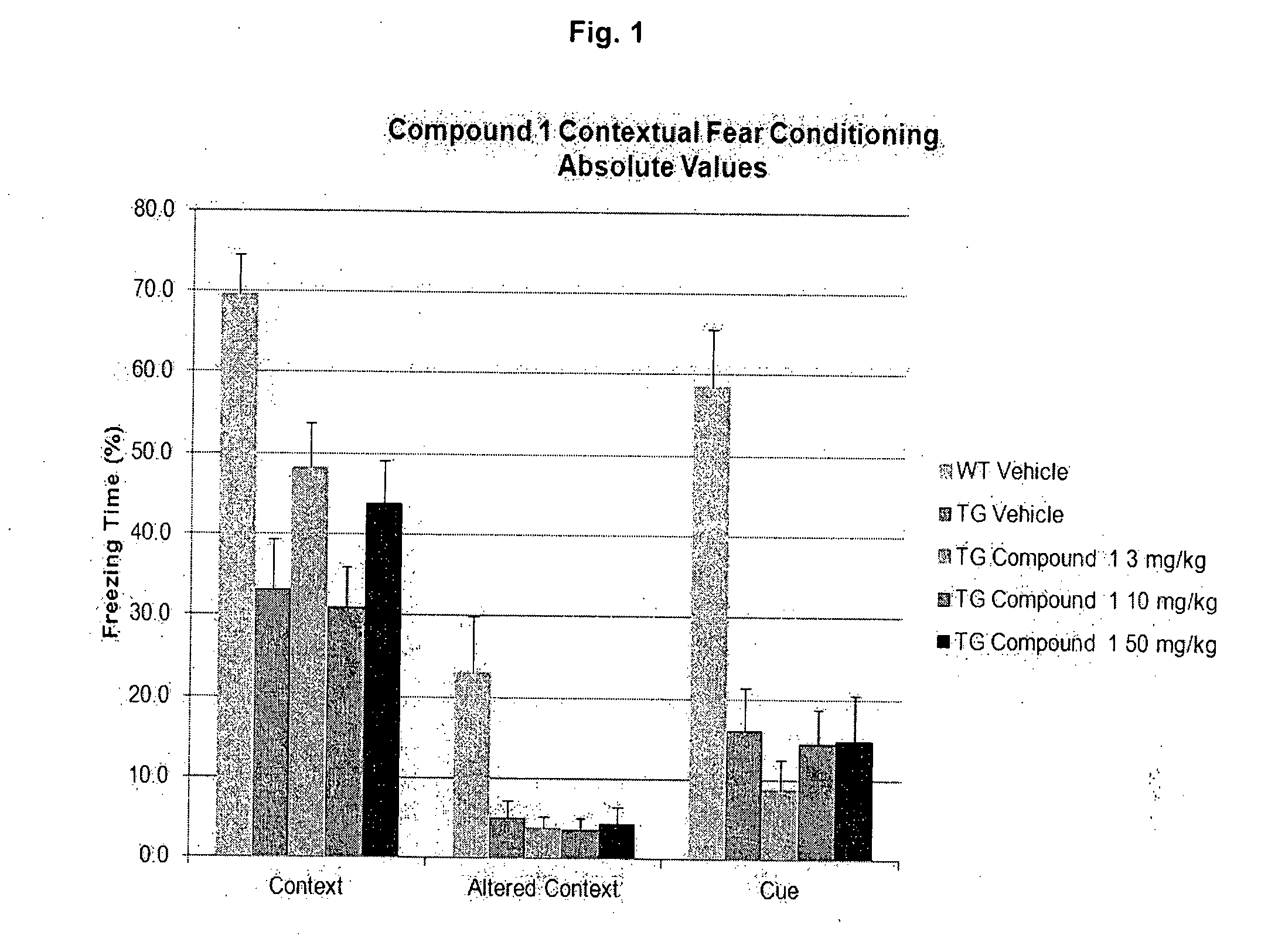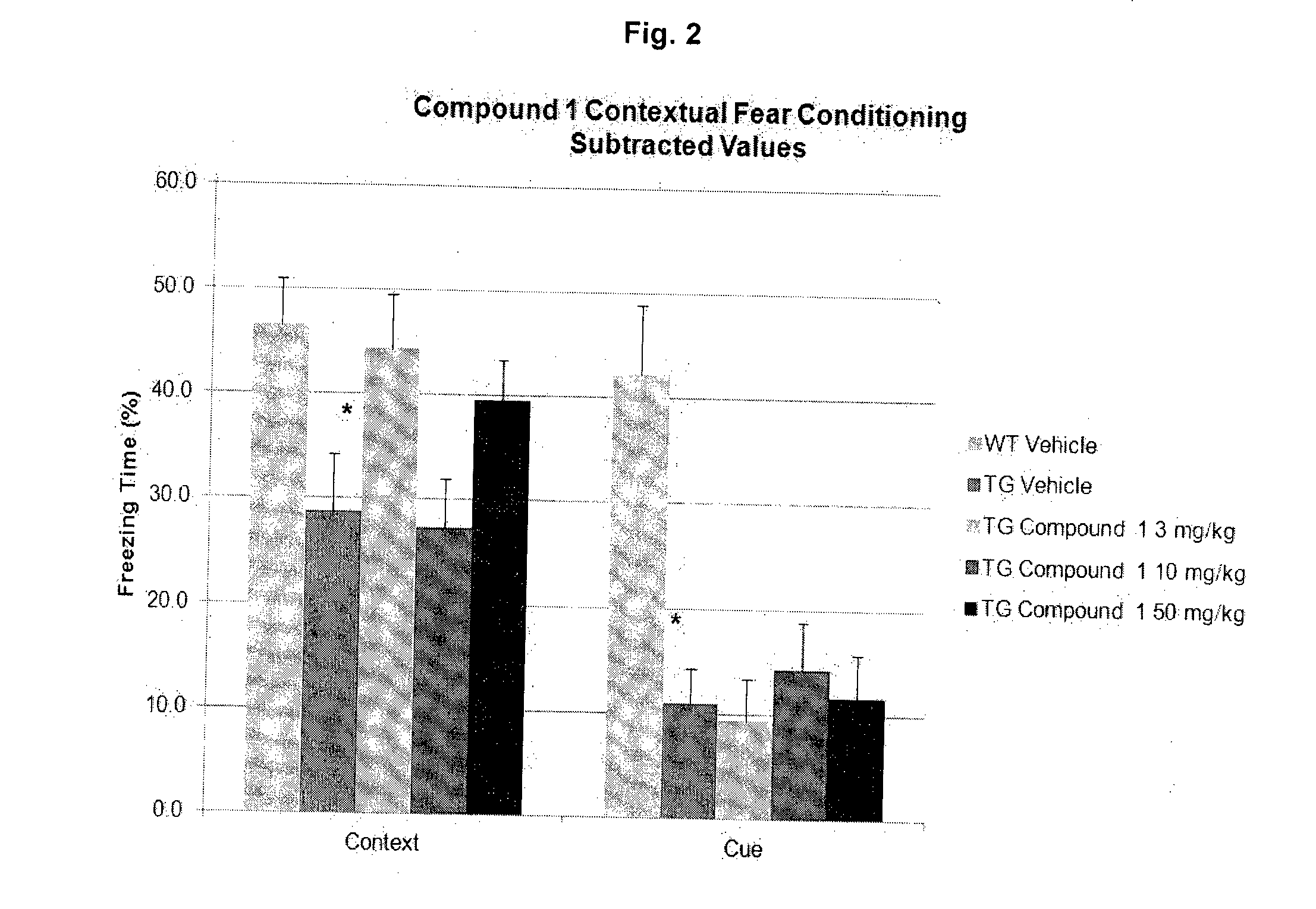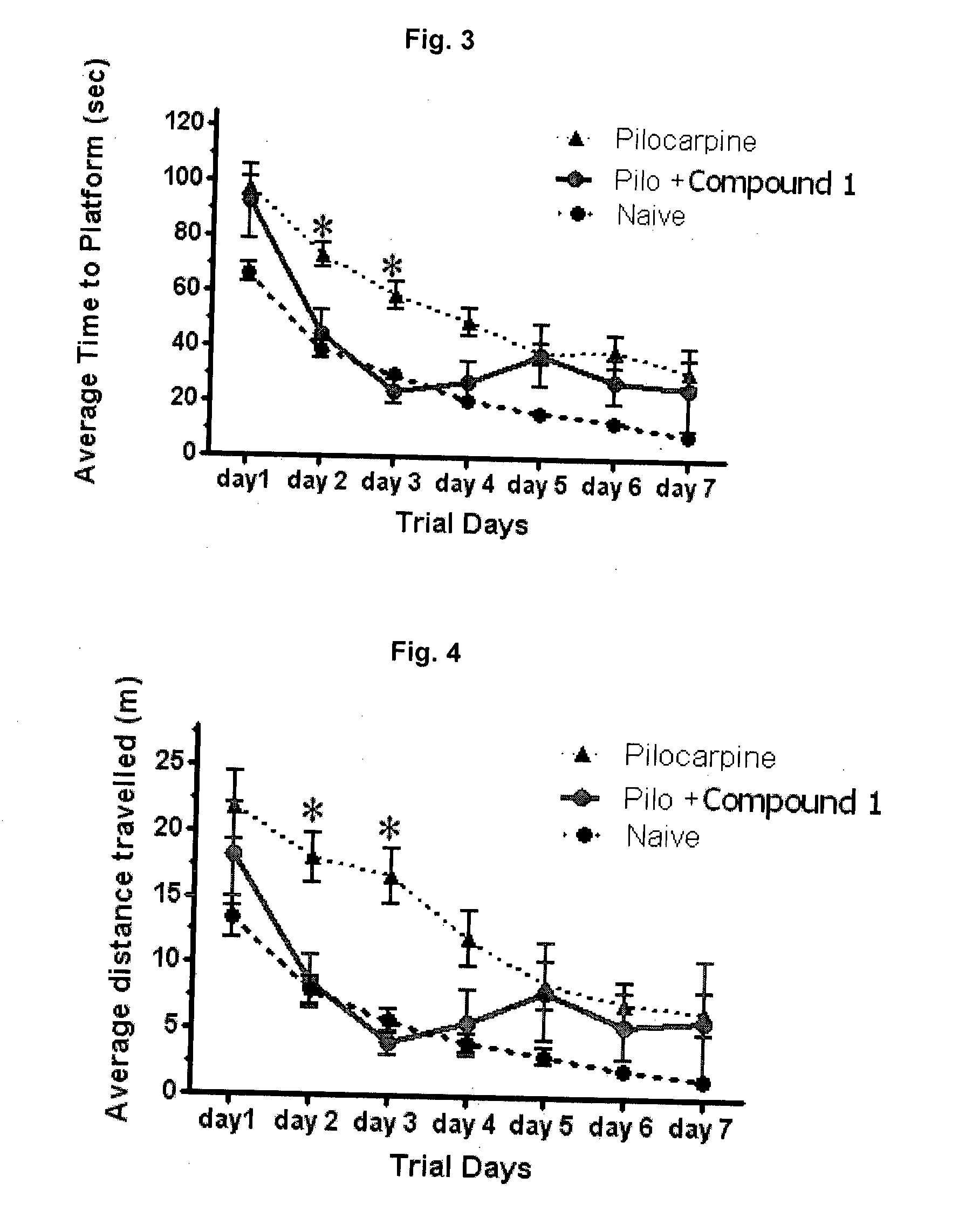Phenyl Carbamate Compound and a Composition for Preventing or Treating a Memory Loss-Related Disease Comprising the Same
a technology of phenyl carbamate and compound, which is applied in the direction of drug compositions, anti-noxious agents, biocides, etc., can solve the problems of difficulty in predicting how the memory loss will affect the person, loss of bodily functions, and difficulty in remembering recent events, so as to achieve excellent neuroprotective activity, enhance the effect of treating or preventing, and improve the effect of memory loss
- Summary
- Abstract
- Description
- Claims
- Application Information
AI Technical Summary
Benefits of technology
Problems solved by technology
Method used
Image
Examples
preparation example 1
Synthesis of 1-(2-chlorophenyl)-trans-1-propene
[0138]
[0139]48 ml of 2-chlorobenzenaldehyde (0.42 mol) and 49.7 ml of 3-pentanone (0.47 mol) were dissolved in 600 mL of hexane in flask, and then stirred with raising the temperature. 53.6 ml of Boron trifluoride etherate (BF3OEt2, 0.42 mol) was added to the resultant under reflux conditions. When the reaction was completed, water was added thereto. After layer separation, the obtained organic layer was washed twice with 1M sodium hydroxide solution (1M NaOH), and then the separated organic layer was washed with water. The separated organic layer was dehydrated with anhydrous magnesium sulfate (MgSO4) and concentrated. The concentrated residue was purified by a silica gel column chromatography to produce the title compound (38 g, yield 58%).
[0140]1H NMR (400 MHz, CDCl3) δ1.94 (d, J=4.8 Hz, 3H), 6.24 (m, 1H), 6.78 (d, J=14 Hz, 1H), 7.11˜7.51 (m, 4H)
preparation example 2
Synthesis of 1-(2-chlorophenyl)-trans-1-butene
[0141]
[0142]The substantially same method as described in Preparation Example 1 was conducted, except that 3-heptanone was used instead of 3-pentanone, to obtain the title compound (2.9 g, yield 83%).
[0143]1H NMR (400 MHz, CDCl3) δ1.14 (d, J=7.6 Hz, 3H), 2.29˜2.33 (m, 2H), 6.28 (dt, J=16 Hz, 6.4 Hz, 1H), 6.78 (d, J=15.6 Hz, 1H), 7.13˜7.54 (m, 4H)
preparation example 3
Synthesis of 1-(2-chlorophenyl)-3-methyl-trans-1-butene
[0144]
[0145]The substantially same method as described in Preparation Example 1 was conducted, except that 2,6-dimethyl-heptan-4-one was used instead of 3-pentanone, to obtain the title compound (8.0 g, yield 50˜90%).
[0146]1H NMR (400 MHz, CDCl3) δ1.14 (d, J=6.8 Hz, 6H), 2.25˜2.57 (m, 1H), 6.20 (dd, J=16 Hz, 7.2 Hz, 1H), 7.64 (d, J=16 Hz, 1H), 7.12˜7.54 (m, 4H)
PUM
| Property | Measurement | Unit |
|---|---|---|
| carbon number | aaaaa | aaaaa |
| temperature | aaaaa | aaaaa |
| volume | aaaaa | aaaaa |
Abstract
Description
Claims
Application Information
 Login to View More
Login to View More - R&D
- Intellectual Property
- Life Sciences
- Materials
- Tech Scout
- Unparalleled Data Quality
- Higher Quality Content
- 60% Fewer Hallucinations
Browse by: Latest US Patents, China's latest patents, Technical Efficacy Thesaurus, Application Domain, Technology Topic, Popular Technical Reports.
© 2025 PatSnap. All rights reserved.Legal|Privacy policy|Modern Slavery Act Transparency Statement|Sitemap|About US| Contact US: help@patsnap.com



